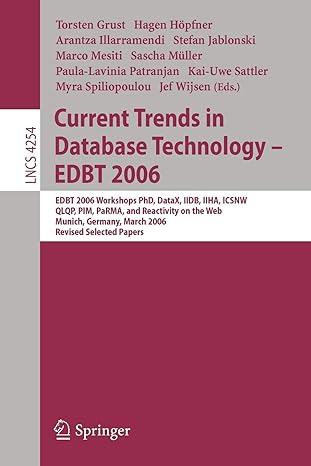Question
Birthday Paradox Simulation in C++ The birthday paradox, states that given a group of 23 (or more) randomly chosen people, the probability is more than
Birthday Paradox Simulation in C++ The birthday paradox, states that given a group of 23 (or more) randomly chosen people, the probability is more than 50% that at least two of them will have the same birthday. Your task is to use simulation to corroborate the mathematical analysis. Algorithm:Include the following libraries:
Input (and echo to the output):the number of times to run the simulationa non-negative integer seed value to be used as the input parameter for srand().
Repeat the following simulation the number of times specified by the input:Initialize a 365 (no leap day) element Boolean array to all false.
Declare and initialize a 365 element integer frequency array.Randomly mark birthdays (true) in the 365 element Boolean array until there's a duplicate. Every time there's not a duplicate birthday, increment the frequency array element whose index is the current number of unmatched birthdays.
When there is a duplicate, break out of the loop.When finished, store, in a new (double) array, the ratio of each value in the frequency array to the total number of runs.
This value will be a the simulated probability of not-matching for that many birthdays.In another array of the same size and type, store the theoretical probability of not-matching. ( N = number of birthdays not-matching) computed via the relations:The probability that 0 or 1 birthday won't match is 1.The probability that 2 birthdays won't match is (1 - 1/365) = (1 - ({N=2} - 1)/365) = P(2).The probability that 3 birthdays won't match is (1 - 1/365)*(1 - 2/365) = P(2)*(1 - ({N=3} -1)/365).
The probability that N > 0 birthdays won't match is P(N - 1)*(1 - (N -1)/365).output a table where for each row:
column 1 is the number of birthdays not-matching (starting with 2),
column 2 is the respective theoretical probabilitycolumn 3 is the respective simulated probability
column 4 is the respective absolute error {theoretical - simulated}
column 5 is the respective relative error {fabs((theoretical - simulated) / theoretical)}
(You'll need to use the following I/O manipulators: scientific, setw(), setprecision())
Use the following function to compute a random integer in the interval [0, bound): int irand2bound(int bound) { return static_cast( rand() / (RAND_MAX + 1.0) * bound ); }
output looks like this:
Enter the number of times to run the birthday match simulation: 1234567 The simulation will be run 1234567 times. Enter a positive integer for the random seed: 123 The random seed is 123. Theoretical vs. Computed probability of no birthday matches for a set of people: _______________________________________________________________________________ People Theoretical Computed Error Rel. Err. _______________________________________________________________________________ 2 9.973e-01 9.971e-01 1.196e-04 1.199e-04 3 9.918e-01 9.916e-01 1.591e-04 1.604e-04 4 9.836e-01 9.835e-01 1.057e-04 1.075e-04 5 9.729e-01 9.730e-01 -8.641e-05 8.882e-05 6 9.595e-01 9.595e-01 6.766e-06 7.051e-06 7 9.438e-01 9.439e-01 -1.108e-04 1.174e-04 8 9.257e-01 9.259e-01 -2.494e-04 2.694e-04 9 9.054e-01 9.057e-01 -3.462e-04 3.824e-04 10 8.831e-01 8.834e-01 -3.097e-04 3.507e-04
etc
help will be appreciated. I'm really struggling lol.
Step by Step Solution
There are 3 Steps involved in it
Step: 1

Get Instant Access to Expert-Tailored Solutions
See step-by-step solutions with expert insights and AI powered tools for academic success
Step: 2

Step: 3

Ace Your Homework with AI
Get the answers you need in no time with our AI-driven, step-by-step assistance
Get Started


